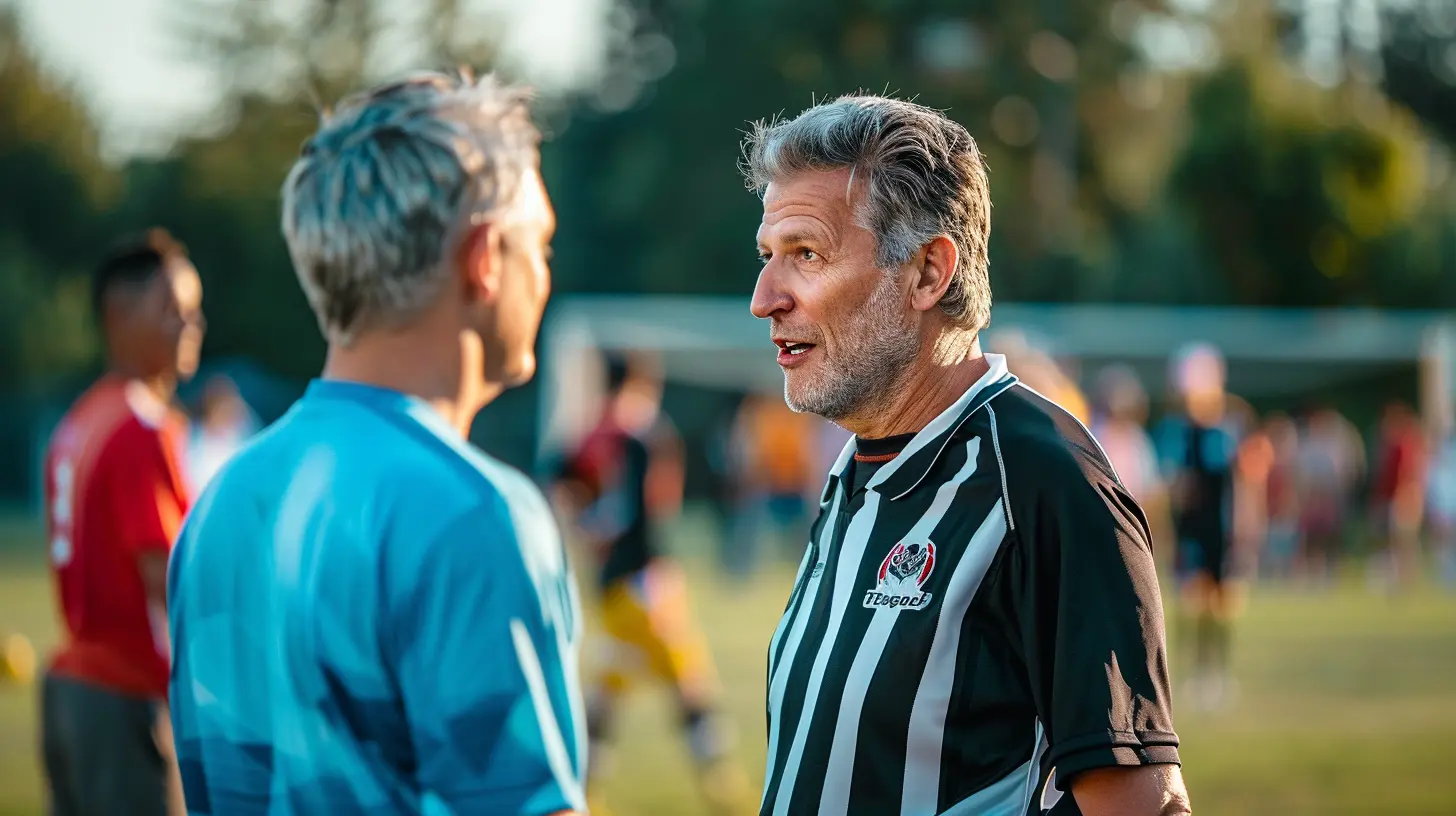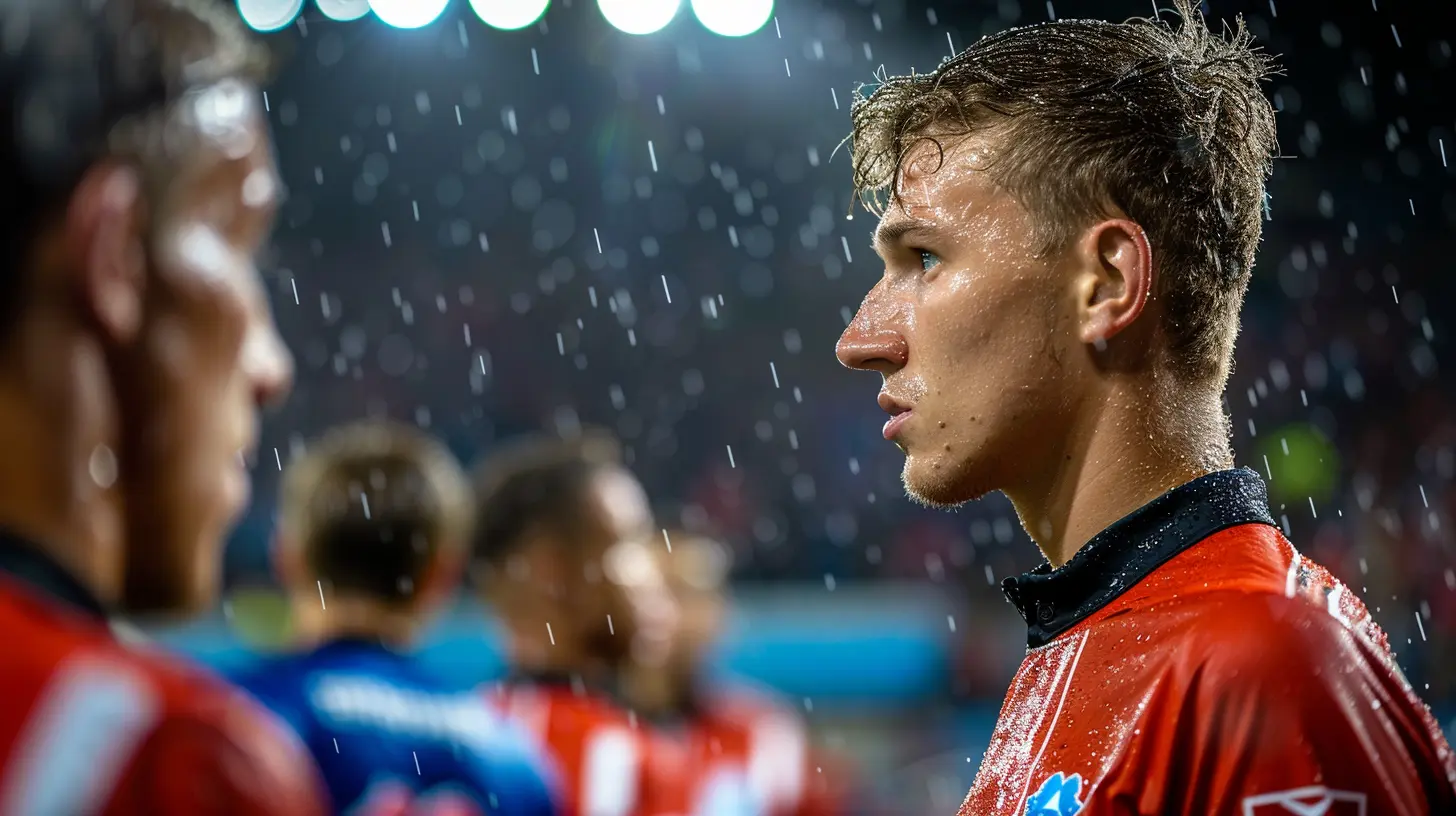24 April 2025
Refereeing in contact sports isn't just about blowing the whistle or handing out penalties—it's about striking a delicate balance between ensuring player safety and maintaining the integrity of fair play. Whether it’s football, rugby, MMA, or hockey, officials constantly find themselves walking a fine line. Should they let players "play through" rough situations, or should they step in immediately for safety concerns?
It's a debate as old as sports itself, and officials often bear the brunt of criticism no matter which side they lean toward. So, let’s break it down. How do referees manage this balancing act, and what challenges do they face in keeping the games both safe and fair?

The Role of a Referee in Contact Sports
At its core, a referee's job is to enforce the rules of the game. Sounds simple, right? Not quite. Rules can be subjective, open to interpretation, and constantly evolving. But beyond that, referees are also responsible for ensuring that players aren’t put in unnecessary danger.Picture a football game where a player gets tackled aggressively. Was it just a hard hit, or did it cross the line into dangerous play? The answer isn’t always clear, and referees have to make split-second decisions under massive pressure.
A Tough Balancing Act
The balance between safety and fair play can feel like walking on a tightrope. If referees are too lenient and allow excessive physicality, injuries can skyrocket. But if they intervene too often, they disrupt the natural flow of the game, frustrating players and fans alike.
Safety First: The Case for Protecting Players
No matter the sport, player safety is a top priority. Nobody wants to see athletes getting seriously hurt, and leagues invest heavily in rule changes, protective gear, and training to minimize risks.Evolving Rules for Safety
Many sports have updated their rules to reduce dangerous play. For example:- Football (NFL & College): The introduction of targeting penalties prevents defenders from leading with their helmets.
- Rugby Union: High tackles are heavily scrutinized, with referees frequently issuing yellow or red cards for contact above the shoulders.
- Ice Hockey: The NHL has cracked down on blindside hits and head shots to prevent concussions.
- Mixed Martial Arts (MMA): Referees can step in earlier to stop fights if a fighter isn’t intelligently defending themselves.
These rule changes aim to protect players from long-term injuries, particularly concussions and spinal damage. But they also bring controversy—some argue they’re making sports too "soft."
The Human Element of Officiating
Referees aren't robots (even with the rise of VAR and video replay). They're human, and that means decisions aren't always black and white. Sometimes, what looks like a dangerous play in real-time turns out to be less severe on replay, and vice versa.Think about the NFL's targeting rule. A referee has to decide in seconds whether a tackle was intentional or just an unfortunate collision. Get it right, and they protect a player’s career. Get it wrong, and they might unfairly punish a team for something unavoidable.

The Argument for Fair Play
While safety is crucial, there’s another side to the story. Contact sports are, by nature, physical. Players train hard to compete at the highest level, and many believe the game should be allowed to flow within reasonable limits."Let Them Play" Mentality
Fans and players alike often express frustration when referees call too many fouls or penalties. In high-stakes games, controversial calls can change the outcome, and no one wants a match decided by an official rather than the athletes themselves.Imagine watching a boxing match where the referee keeps stepping in at the slightest exchange of punches. It ruins the spectacle, right? The same applies to football, rugby, or hockey—too many stoppages kill the rhythm of the game.
The Psychological Battle
Referees also have to manage the mental aspect. If they start calling every minor infraction, players may hesitate, second-guessing their decisions. This hesitation can actually make the game more dangerous, as athletes who aren't fully committed to a tackle or play might put themselves in harm’s way.
The Impact of Technology on Refereeing
In today’s world, referees have more tools than ever to get decisions right. Video replay systems like VAR (soccer), instant replay (NFL & NBA), and Hawkeye (tennis & cricket) have changed the game.Pros of Technology in Officiating
- More Accurate Calls: Replays help referees review incidents in slow motion to make better decisions.- Less Controversy: Ideally, tech should eliminate blatant mistakes that could unfairly swing a game.
- Player Protection: Reviews can highlight dangerous play that went unnoticed in real-time.
Cons of Technology in Officiating
- Slows Down the Game: Frequent reviews disrupt momentum and frustrate players and fans.- Still Open to Interpretation: Even with multiple camera angles, officials sometimes disagree on calls.
- Takes Away Human Element: Some argue that referees should rely on instinct and experience rather than endless video reviews.
The Refereeing Dilemma: Can Both Safety and Fair Play Coexist?
So, can referees protect players while still keeping the spirit of fair competition alive? It’s a tough task, but the best officials find a way to do both.A well-officiated game allows players to be physical without crossing the line into reckless play. It’s about consistency—if players know what’s allowed and what’s not, they can adjust accordingly.
The Best Officials Have These Traits
- Consistency: They apply the rules evenly across both teams.- Control: They manage the game without over-policing it.
- Game Awareness: They understand the flow of the match and know when to let things go or step in.
- Respect: The best refs earn respect from players by being firm but fair.
Final Thoughts
Refereeing in contact sports will always be a challenging, thankless job. No matter what calls they make, someone will always disagree. But at the core of the debate between safety and fair play, one thing remains true: sports are about competition, and competition should be both fair and safe.While officiating will never be perfect, ongoing improvements in rules, training, and technology will continue to shape the way referees approach this balancing act. And as fans, players, and officials, all we can hope for is a game where skills, not controversy, decide the outcome.


